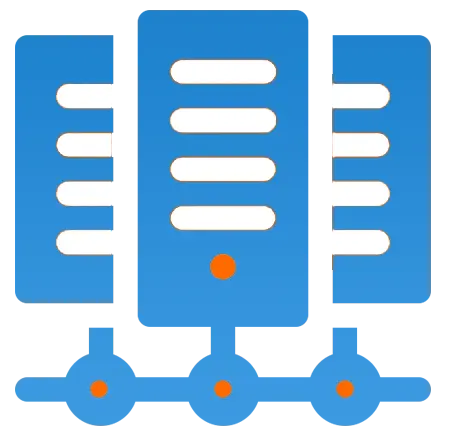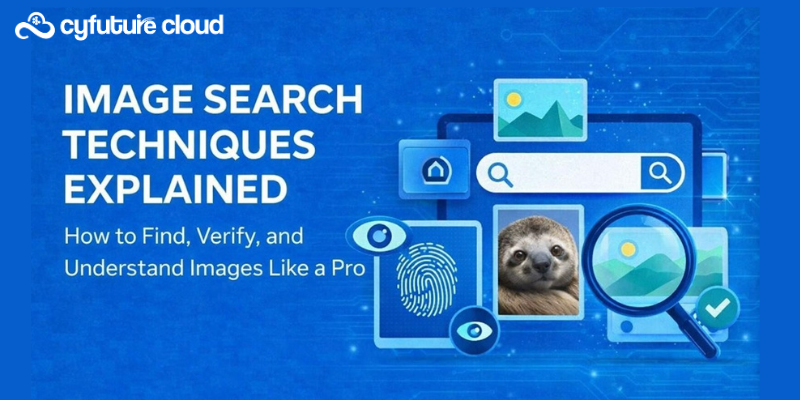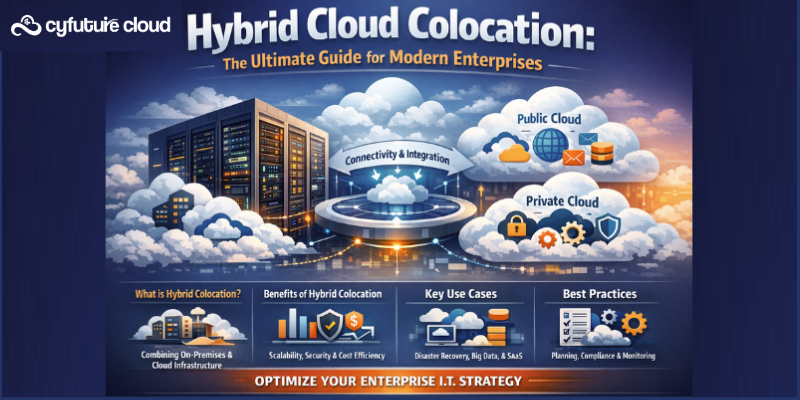Get 69% Off on Cloud Hosting : Claim Your Offer Now!
- Products
-
Compute
Compute
- Predefined TemplatesChoose from a library of predefined templates to deploy virtual machines!
- Custom TemplatesUse Cyfuture Cloud custom templates to create new VMs in a cloud computing environment
- Spot Machines/ Machines on Flex ModelAffordable compute instances suitable for batch jobs and fault-tolerant workloads.
- Shielded ComputingProtect enterprise workloads from threats like remote attacks, privilege escalation, and malicious insiders with Shielded Computing
- GPU CloudGet access to graphics processing units (GPUs) through a Cyfuture cloud infrastructure
- vAppsHost applications and services, or create a test or development environment with Cyfuture Cloud vApps, powered by VMware
- Serverless ComputingNo need to worry about provisioning or managing servers, switch to Serverless Computing with Cyfuture Cloud
- HPCHigh-Performance Computing
- BaremetalBare metal refers to a type of cloud computing service that provides access to dedicated physical servers, rather than virtualized servers.
-
Storage
Storage
- Standard StorageGet access to low-latency access to data and a high level of reliability with Cyfuture Cloud standard storage service
- Nearline StorageStore data at a lower cost without compromising on the level of availability with Nearline
- Coldline StorageStore infrequently used data at low cost with Cyfuture Cloud coldline storage
- Archival StorageStore data in a long-term, durable manner with Cyfuture Cloud archival storage service
-
Database
Database
- MS SQLStore and manage a wide range of applications with Cyfuture Cloud MS SQL
- MariaDBStore and manage data with the cloud with enhanced speed and reliability
- MongoDBNow, store and manage large amounts of data in the cloud with Cyfuture Cloud MongoDB
- Redis CacheStore and retrieve large amounts of data quickly with Cyfuture Cloud Redis Cache
-
Automation
Automation
-
Containers
Containers
- KubernetesNow deploy and manage your applications more efficiently and effectively with the Cyfuture Cloud Kubernetes service
- MicroservicesDesign a cloud application that is multilingual, easily scalable, easy to maintain and deploy, highly available, and minimizes failures using Cyfuture Cloud microservices
-
Operations
Operations
- Real-time Monitoring & Logging ServicesMonitor & track the performance of your applications with real-time monitoring & logging services offered by Cyfuture Cloud
- Infra-maintenance & OptimizationEnsure that your organization is functioning properly with Cyfuture Cloud
- Application Performance ServiceOptimize the performance of your applications over cloud with us
- Database Performance ServiceOptimize the performance of databases over the cloud with us
- Security Managed ServiceProtect your systems and data from security threats with us!
- Back-up As a ServiceStore and manage backups of data in the cloud with Cyfuture Cloud Backup as a Service
- Data Back-up & RestoreStore and manage backups of your data in the cloud with us
- Remote Back-upStore and manage backups in the cloud with remote backup service with Cyfuture Cloud
- Disaster RecoveryStore copies of your data and applications in the cloud and use them to recover in the event of a disaster with the disaster recovery service offered by us
-
Networking
Networking
- Load BalancerEnsure that applications deployed across cloud environments are available, secure, and responsive with an easy, modern approach to load balancing
- Virtual Data CenterNo need to build and maintain a physical data center. It’s time for the virtual data center
- Private LinkPrivate Link is a service offered by Cyfuture Cloud that enables businesses to securely connect their on-premises network to Cyfuture Cloud's network over a private network connection
- Private CircuitGain a high level of security and privacy with private circuits
- VPN GatewaySecurely connect your on-premises network to our network over the internet with VPN Gateway
- CDNGet high availability and performance by distributing the service spatially relative to end users with CDN
-
Media
-
Analytics
Analytics
-
Security
Security
-
Network Firewall
- DNATTranslate destination IP address when connecting from public IP address to a private IP address with DNAT
- SNATWith SNAT, allow traffic from a private network to go to the internet
- WAFProtect your applications from any malicious activity with Cyfuture Cloud WAF service
- DDoSSave your organization from DoSS attacks with Cyfuture Cloud
- IPS/ IDSMonitor and prevent your cloud-based network & infrastructure with IPS/ IDS service by Cyfuture Cloud
- Anti-Virus & Anti-MalwareProtect your cloud-based network & infrastructure with antivirus and antimalware services by Cyfuture Cloud
- Threat EmulationTest the effectiveness of cloud security system with Cyfuture Cloud threat emulation service
- SIEM & SOARMonitor and respond to security threats with SIEM & SOAR services offered by Cyfuture Cloud
- Multi-Factor AuthenticationNow provide an additional layer of security to prevent unauthorized users from accessing your cloud account, even when the password has been stolen!
- SSLSecure data transmission over web browsers with SSL service offered by Cyfuture Cloud
- Threat Detection/ Zero DayThreat detection and zero-day protection are security features that are offered by Cyfuture Cloud as a part of its security offerings
- Vulnerability AssesmentIdentify and analyze vulnerabilities and weaknesses with the Vulnerability Assessment service offered by Cyfuture Cloud
- Penetration TestingIdentify and analyze vulnerabilities and weaknesses with the Penetration Testing service offered by Cyfuture Cloud
- Cloud Key ManagementSecure storage, management, and use of cryptographic keys within a cloud environment with Cloud Key Management
- Cloud Security Posture Management serviceWith Cyfuture Cloud, you get continuous cloud security improvements and adaptations to reduce the chances of successful attacks
- Managed HSMProtect sensitive data and meet regulatory requirements for secure data storage and processing.
- Zero TrustEnsure complete security of network connections and devices over the cloud with Zero Trust Service
- IdentityManage and control access to their network resources and applications for your business with Identity service by Cyfuture Cloud
-
-
Compute
- Solutions
-
Solutions
Solutions
-
 Cloud
Hosting
Cloud
Hosting
-
 VPS
Hosting
VPS
Hosting
-
GPU Cloud
-
 Dedicated
Server
Dedicated
Server
-
 Server
Colocation
Server
Colocation
-
 Backup as a Service
Backup as a Service
-
 CDN
Network
CDN
Network
-
 Window
Cloud Hosting
Window
Cloud Hosting
-
 Linux
Cloud Hosting
Linux
Cloud Hosting
-
Managed Cloud Service
-
Storage as a Service
-
 VMware
Public Cloud
VMware
Public Cloud
-
 Multi-Cloud
Hosting
Multi-Cloud
Hosting
-
 Cloud
Server Hosting
Cloud
Server Hosting
-
 Bare
Metal Server
Bare
Metal Server
-
 Virtual
Machine
Virtual
Machine
-
 Magento
Hosting
Magento
Hosting
-
Remote Backup
-
 DevOps
DevOps
-
 Kubernetes
Kubernetes
-
 Cloud
Storage
Cloud
Storage
-
NVMe Hosting
-
 DR
as s Service
DR
as s Service
-
-
Solutions
- Marketplace
- Pricing
- Resources
- Resources
-
By Product
Use Cases
-
By Industry
- Company
-
Company
Company
-
Company
What is Cloud Security?
Table of Contents
Get Secured Cloud Hosting with Cyfuture Cloud
Both the cloud service provider and the client are accountable for cloud security. In the Shared Responsibility Model, responsibilities fall into three general categories: those that are always the provider’s, those that are always the customer’s, and those that change depending on the service model: Cloud email is an example of Infrastructure as a Service (IaaS), Platform as a Service (PaaS), or Software as a Service (SaaS).
The provider is always responsible for the security of the infrastructure, including controlling access to, patching, and configuring the physical hosts and physical networks that house the computing instances, storage, and other resources.

The client is always responsible for managing users and their access privileges (identification and access management), preventing unwanted access to cloud accounts, encrypting and securing cloud-based data assets, and managing its security posture (compliance).
The Top 7 Difficulties in Advanced Cloud Security
The lack of distinct perimeters in the public cloud creates a fundamentally different security reality. Adopting contemporary cloud strategies like automated Continuous Integration and Continuous Deployment (CI/CD) techniques, distributed serverless architectures, and transient assets like Functions as a Service and containers makes this even more difficult.
The various layers of risk and sophisticated cloud-native security concerns that today’s cloud-oriented enterprises must deal with include the following:
1. Expanded Area of Attack
Hackers now use the public cloud environment as a sizable and very appealing attack surface, taking advantage of unsecured cloud ingress ports to gain access to and disrupt workloads and data in the cloud. Numerous hostile threats, including malware, zero-day vulnerabilities, account takeovers, and others, are now commonplace.
2. Lack of Tracking and Visibility
The infrastructure layer is completely under the control of the cloud providers in the IaaS model, and it is not made available to the clients. The PaaS and SaaS cloud models further extend the lack of visibility and control. Customers who use the cloud frequently struggle to visualize their cloud environments or accurately identify and measure their cloud assets.
3. Always-Evolving Workloads
At scale and speed, cloud assets are dynamically provided and retired. Because of the constantly shifting and transient nature of the workloads in such a flexible and dynamic environment, traditional security systems are simply unable to enforce protection regulations.
4. Automation, DevOps, and DevSecOps
Companies that have adopted the highly automated DevOps CI/CD culture must make sure that the right security measures are identified and incorporated early in the development cycle in code and templates. After a workload has been put in production, security-related changes made to it can compromise the organization’s security posture and increase time to market.
5. Key Management and Granular Privilege
Cloud user roles are frequently set up very loosely, offering significant powers that are not needed or intended. Giving database delete or write capabilities to inexperienced users or individuals who have no legitimate need to remove or add database assets is one frequent example. Sessions are vulnerable to security threats at the application level due to poorly set keys and privileges.
6. Environmental Complexities
In today’s hybrid and multi-cloud environments, which are the environments of choice for businesses, managing security requires techniques and tools that operate without issue across private cloud providers, public cloud providers, and on-premise deployments—including branch office edge protection for geographically dispersed organizations.
7. Governance and Compliance in the Cloud
The majority of the well-known accrediting systems, including PCI 3.2, NIST 800-53, HIPAA, and GDPR, have been adopted by all the top cloud service providers. Customers must make sure that their workload and data processing are compliant, nevertheless. If technologies aren’t employed to achieve continuous compliance checks and deliver real-time alerts regarding misconfigurations, the compliance audit process becomes all but impossible given the poor visibility and dynamic nature of the cloud environment.

What makes cloud security crucial?
The adoption of cloud-based environments and IaaS, PaaS, or SaaS computing models have increased in contemporary organizations. When organizations effectively resource their departments, the dynamic nature of infrastructure management, particularly in scaling applications and services, can present a number of issues. Organizations can outsource many of the time-consuming IT-related duties thanks to these as-a-service models.
Understanding the security standards for keeping data safe has become essential as businesses continue to shift to the cloud. Although third-party cloud computing service providers might take over the management of this infrastructure, the accountability and security of data assets may not necessarily move with it.
The majority of cloud service providers actively maintain the integrity of their servers by default adhering to standard security practices. When it comes to safeguarding data, applications, and workloads that are hosted in the cloud, enterprises must take their unique factors into account.
With the continued development of the digital environment, security concerns have advanced. Due to an organization’s general lack of visibility in data access and movement, these risks specifically target suppliers of cloud computing. Organizations may encounter serious governance and compliance issues when handling client information, regardless of where it is housed, if they don’t take proactive measures to increase their cloud security.
No of the size of your company, cloud security needs to be a major talking point. Almost every aspect of contemporary computing is supported by cloud infrastructure, which spans several verticals and all sectors.
However, putting in place sufficient defenses against contemporary cyberattacks is essential for successful cloud adoption. Cloud security solutions and best practices are essential for maintaining business continuity regardless of whether your firm uses a public, private, or hybrid cloud environment.
Recent Post

Stay Ahead of the Curve.
Join the Cloud Movement, today!
© Cyfuture, All rights reserved.
Send this to a friend

 Pricing
Calculator
Pricing
Calculator
 Power
Power
 Utilities
Utilities VMware
Private Cloud
VMware
Private Cloud VMware
on AWS
VMware
on AWS VMware
on Azure
VMware
on Azure Service
Level Agreement
Service
Level Agreement 


















